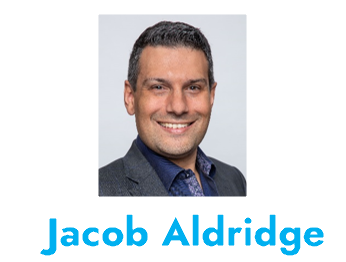Where Has All My Cash Gone? In Blackboard Fridays Episode 112, Jacob talks about Business Financials. Need this implemented into your business? Talk to the international business advisor who can do exactly that – Contact Jacob, Learn More, or Subscribe for Updates.
It’s a lament heard all around the business world, and a common refrain in accounting offices globally – “What do you MEAN I made a profit. My bank account is empty. WHERE HAS ALL THE CASH GONE?!”
I suppose it’s possible than an employee at your bank committed mass fraud, and is currently en route with your cash to a non-extradition nation. The more likely scenario however is that the Cash is actually hiding in plain sight, floating around your financial statements including that most mysterious beast the Balance Sheet.
And there’s nobody better to answer your question, and empower you to manage your cash differently or at least understand it better, than Blackboard Fridays favourite John Knight.
If the size of your bank account has you feeling down, let this week’s episode give you a lift by watching it here.
Who is Jacob Aldridge, Business Coach?
“The smart and quirky advisor who gets sh!t done in business.” Back independent since 2019.
Since April 2006, I’ve been an international business advisor providing bespoke solutions for privately-owned businesses with 12-96 employees.
At this stage you have proven your business model, but you’re struggling to turn aspirations into day-to-day reality. You are still responsible for all 28 areas of your business, but you don’t have the time or budget to hire 28 different experts.
You need 1 person you can trust who can show you how everything in your business is connected, and which areas to prioritise first.
That’s me.
Learn more here. Or Let’s chat.
Transcript
One of the most questions we get asked, especially when we’re out talking to businesses about their performance, is where has all the cash gone? Answer to the question is often hidden in the balance sheet, but often, many small to medium business owners don’t know how to read their balance sheet or don’t even ever look at the balance sheet. But there’s four key places that your profit disappears to and doesn’t turn into cash.
The first one is loans, and in particular, your principal loan repayments. So when you make a repayment to the bank, typically, there’s a principal portion and an interest portion. The interest portion appears on your profit and loss, and therefore reduces the profit that’s being disclosed, but the principal portion doesn’t go to your profit and loss statement, and so therefore, if you’re contributing a lot of principal loan repayments, then you’re going to have to fund that cash out of your profits, and that’s a lot of where your profits go.
The other one is tax, and in particular, prior tax payments, but also, you might be looking at a profit and loss statement that doesn’t provide for the tax. Typically, your accountant will journal that in for you at the end of the year, so if you’re in a company structure, for example, quite often, you’ll straightaway lose 27 and a half percent of those profits to a provision for tax.
Often, people are also catching up on old tax payments, so that’s essentially like a loan as well, so those repayments of those old debts is another place that your profits disappear to, hence why you don’t have as much in the bank account. If you’re investing money in capital.
Now what I’m particularly talking about there is maybe you’re doing an office fit out and you fund it from cash. Maybe you’re buying a new car and you funded it from cash. Maybe you’ve bought some new office equipment or some new machinery for your production. Now if that’s the case and you’ve funded that from cash, that won’t be reducing your profit, and that is where your profit is disappearing to.
And last, but by no means least, the other common one is owner’s drawings or owner’s remuneration. So accountants will quite often change the nature of those payments which are made to owners, and depending on how that’s taken out will depend on how it’s reported in the profit figure that you’re talking about.
Quite often for tax purposes, we’ll have you take owner’s drawings throughout the year. They will appear like a loan on your balance sheet, and then they get offset until the end of the year by distribution or by dividends.
Unless you’re getting paid by wages, then those owner’s amounts will not appear on your profit and loss, and then it’s another reason to explain where all your cash has gone.
Next Steps
Want to learn more about how this can apply to your business? It costs nothing to chat:
- Email me jacob@jacobaldridge.com (I read them all)
- Call, Text, or WhatsApp me +61 427 151 181
- Or just Subscribe https://jacobaldridge.com/about/subscribe-to-jacob-aldridge-com/ to stay in touch




